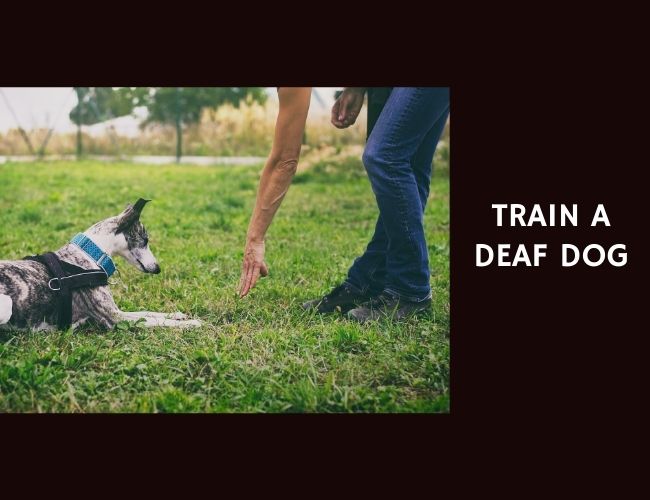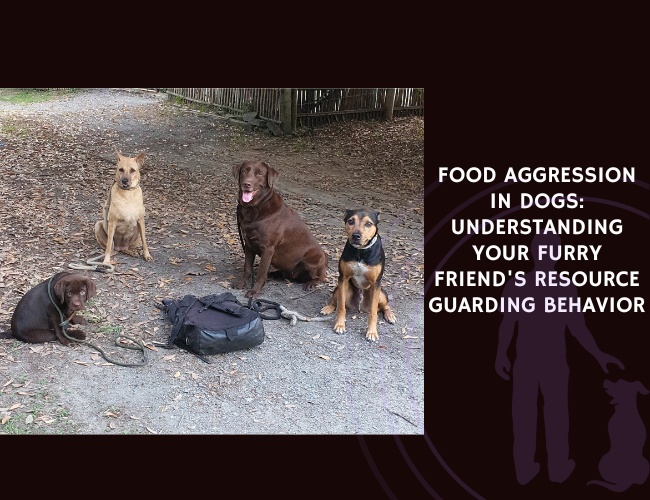Introduction to the Golden Retriever
Origins and Early Purpose
The Golden Retriever is a breed that captures hearts all around the world, but understanding its origins adds a whole new level of appreciation. This beloved companion was first developed in 19th-century Scotland. Lord Tweedmouth, the breed’s key founder, aimed to create the ultimate hunting partner. He wanted a dog that could retrieve shot game—mostly waterfowl and upland birds—from both rough terrain and chilly waters. The breed’s ancestors include the now-extinct Yellow Retriever, Tweed Water Spaniel, Bloodhound, and Irish Setter. This thoughtful mix resulted in the Golden Retriever’s signature ability to work efficiently on land and water, making it an unbeatable gun dog for hunting trips.
From Field to Family: How the Breed Evolved
Golden Retrievers quickly won over not just hunters, but families as well. Their gentle nature, cooperative spirit, and eagerness to please suited them for life beyond the fields. They found work not only as gun dogs, but also as service helpers and therapy animals. Their adaptability is a big reason they became one of the most popular breeds, fitting into a variety of modern households.
Physical Characteristics and Appearance
Golden Retrievers are known for their signature golden coats, which vary in shade from light cream to deep gold. Their medium- to large-size bodies are strong yet friendly-looking, with a well-proportioned build. Typical adults weigh between 25kg and 34kg. They stand about 51cm to 61cm tall at the shoulder, giving them both elegance and strength.
Their straight to wavy fur is dense and water-resistant—a feature that faithfully recalls their working roots. Fluffy tails fan out behind them, while their ears are set slightly above eye level, hanging down softly. Golden Retrievers have intelligent, friendly eyes and a strong muzzle that’s perfect for carrying objects gently.
Why This Breed Stands Out
What truly sets the Golden Retriever apart is the natural blend of beauty and working ability. They are easy to spot and hard not to love, thanks to their loyal expression and approachable looks. If you’re searching for a dog that brings together history, purpose, and charm, the Golden Retriever is an enduring favorite.
Ready to learn more? There’s so much more to discover about what makes this breed tick and why it thrives in so many different homes. Stay with us as we explore their unique personality and behavior next!
Character and Behavior
Friendly and Adaptable Companions
Golden Retrievers are famous for their gentle and friendly temperament. They love spending time with people and fit well into many different family styles. Whether with children or adults, their playful attitude helps them bond quickly and create positive connections. This breed’s friendly nature also makes them a favorite for service and therapy work, as they show a strong desire to please and comfort others.
Golden Retrievers are highly adaptable. They manage changes to daily routines without much fuss. Their cooperative attitude makes them easy to guide during training or transitions, offering families flexibility as their needs change. They do best with clear expectations and gentle leadership.
Social Nature and Affection
A key trait of Golden Retrievers is their sociable character. These dogs thrive when included in daily life, seeking out gatherings, family time, and activities. Their strong affiliative drive means they love to be close to people, responding well to praise, petting, and affectionate gestures. Golden Retrievers also have a high tactile tolerance, gladly enjoying petting, brushing, and cuddles—making them ideal for homes with children or multiple family members.
Low aggression levels set Golden Retrievers apart from more excitable or defensive breeds. They are slow to react aggressively, preferring soft approaches to conflict and seeking gentle resolutions. This stable, easygoing temperament is one reason they’re chosen as therapy companions in sensitive settings.
Typical Behaviors and Enthusiasm
It’s important to note Golden Retrievers’ tendency toward mouth-oriented behaviors. Due to their heritage as retrieving dogs, they often carry objects or gently mouth hands, toys, or household items. Without direction, this habit can evolve into unwanted chewing or overexcitement. In environments without structure, Golden Retrievers may become overly enthusiastic, especially if they don’t have clear boundaries or daily activities. You might see them seeking attention, becoming restless, or showing signs of frustration if left without tasks or interaction.
By understanding these natural behaviors, owners can provide better guidance and set their Golden Retriever up for success. Support, structure, and shared activities go a long way to helping these loving dogs thrive—ensuring a happy and harmonious home environment.
Ready to help your Golden Retriever reach their full potential? Our team is here to guide you every step of the way as you nurture your companion’s best qualities.

Training and Education
Golden Retrievers stand out for their sharp minds and enthusiasm for learning. This natural intelligence, combined with a strong desire to please, makes them some of the easiest dogs to train. If you’re ready to shape a happy, well-mannered companion, Golden Retrievers will meet you more than halfway!
Intelligence and Willingness to Learn
Golden Retrievers are always eager to figure out what you want. Simple commands like “sit,” “stay,” or “come” are usually picked up quickly, especially when there’s something in it for them—like praise, play, or food rewards. Their ability to learn isn’t just limited to basics; with the right approach, Goldens can master service dog tasks, scent work, and advanced tricks. Their love for making you happy is a true training superpower.
The Power of Positive Reinforcement
These pups bloom under kindness. Golden Retrievers respond best to training that uses positive reinforcement—think treats 🦴, toys, and big enthusiastic “Good dog!” celebrations. Harsh corrections or punishment can sap their confidence, making it harder for them to learn. Early socialization is just as important. Enroll your puppy in group classes or arrange friendly meetups with new people and pets. This gives your Golden Retriever a solid foundation in self-control and good manners, helping them feel confident in busy, ever-changing environments.
Beating Distractibility with Structure
It’s no secret: Golden Retrievers are sometimes easily distracted—especially by smells, noises, and the potential for fun. The secret to overcoming this is consistency. Stick to clear, repeatable training routines. Practice commands in different places, at different times, with varying levels of distraction. Use short, fun sessions to keep their interest high and always end on a win.
Keeping Minds Busy
Bored Golden Retrievers often find their own entertainment—sometimes in ways you might not appreciate (hello, chewed shoes!). That’s why it’s important to include cognitive enrichment. Puzzle toys, new tricks, and scent games keep their brains in shape and curb unwanted behaviors. This mental exercise is as vital as daily playtime and walks.
With the right blend of structure, kindness, and fun, you’ll find that working with your Golden Retriever is a joy—and it pays off in a lifetime of loyalty and partnership.
Nutritional Requirements
Understanding Caloric Needs
Golden Retrievers have moderate energy requirements, but it’s important to remember that their caloric needs are not the same for every dog. Their daily intake will depend on several factors, including their size, age, and activity level. For example, a growing puppy or a very active adult needs more calories, while mature or less active dogs require fewer. Adult Golden Retrievers Nutrition usually do best with 2-3 cups of high-quality dry food per day, split into two meals. Show-line, pet, and working-line dogs may have varying needs, so it’s always smart to check with your vet for an individualized plan.
Managing Food Motivation and Obesity
One of the trademarks of Golden Retrievers is their love of food. While food-motivation makes training easier, it also increases the risk of obesity—especially if they don’t get enough exercise in less active households. Extra weight can put strain on their joints and lead to other health concerns.
To help keep your Golden Retriever at a healthy weight:
- Use measuring cups for accurate portions
- Stick to regular feeding times
- Limit table scraps and high-calorie treats
- Try slow-feeding bowls to prevent gulping
Monitoring your pet’s body condition is key. You should be able to feel, but not see, their ribs and notice a visible waist when looking from above.
Key Nutrients for Health
A balanced diet is essential for your Golden Retriever’s lifelong health and happiness. Their joints, skin, and coat have special nutritional needs:
- Include omega-3 fatty acids and glucosamine to support healthy hips, elbows, and spine
- Make sure the food has enough quality protein for muscle development
- Look for essential fatty acids to help keep their signature coat glossy
Some Goldens may benefit from diets formulated for large breeds, which often include joint-supportive nutrients and calorie control. Always provide plenty of fresh water and keep an eye out for food allergies that may show up as upset stomach or itchy skin.
Providing your Golden Retriever with the right diet helps them remain active, playful, and in good shape well into their senior years.
Let’s continue by exploring how to keep your four-legged friend healthy and thriving with the right preventative care and an understanding of common health risks.
Gentle. Smart. Irresistible.
Heart of gold, mind to match.
Golden Retrievers aren’t just beautiful—they’re brilliant. Their eagerness to learn and please makes training feel like teamwork, not a chore.
Loyal in every setting.
Whether by your side at home or working as a therapy dog, Golden Retrievers live to connect. Their emotional sensitivity and sociable spirit make them natural family members.



Fluffy, friendly—and always hungry.
Their love of food fuels their charm and their waistlines. Without structure, you’ll find more shedding, more chewing, and a lot more begging.
Health Concerns and Genetic Predispositions
Common Health Challenges
Golden Retrievers are wonderful companions, but it’s important to be aware of the health risks that can affect their quality of life. Some of the most frequent joint problems are hip and elbow dysplasia. These conditions happen when the joints do not develop properly, leading to pain, limping, or arthritis as dogs get older. Responsible breeding and regular check-ups can help catch these problems early and keep your dog comfortable.
Eye health is another key concern. Golden Retrievers can develop hereditary cataracts and progressive retinal atrophy (PRA). PRA is a gradual loss of vision that often starts with night blindness. Responsible breeders often screen for these issues, but there’s still a chance your dog could develop them later. Regular veterinary eye exams are a great way to stay ahead of vision problems.
Increased Cancer Risk
Unfortunately, cancer is more common in Golden Retrievers than many other breeds. As dogs get older, they face a higher risk for hemangiosarcoma and lymphoma. Hemangiosarcoma is a fast-growing cancer that usually starts in the spleen, heart, or liver. Lymphoma affects the white blood cells. Early detection gives your dog the best chance for treatment, so it’s always important to talk to your vet if you notice anything unusual—such as sudden fatigue, weight loss, or lumps.
Other Genetic Conditions
This breed also has a higher risk of certain other inherited diseases such as hypothyroidism and subvalvular aortic stenosis (SAS), which affects the heart’s function. Food or environmental allergies can cause itchy skin or upset stomach, so watch for changes in coat condition or digestive habits. Keep an open line of communication with your vet to catch issues fast.
Lifespan and Longevity
Golden Retrievers typically live ten to twelve years. Their lifespan can be strongly influenced by preventative care and weight management. Keeping your dog at a healthy weight lowers the risk of joint problems, diabetes, and heart strain. A diet rich in joint-supportive nutrients—like omega-3 fatty acids and glucosamine—helps maintain mobility and overall health.
Regular check-ups, a balanced diet, exercise, and an attentive eye can go a long way in ensuring your Golden Retriever has a happy, healthy life. 🐾
Environmental Needs and Lifestyle
Golden Retrievers are happiest in homes that buzz with activity, warmth, and plenty of company. These dogs need more than just a backyard; they truly thrive where there’s daily engagement and emotional connection. If you’re considering adding a Golden Retriever to your family, understanding their environment needs will help you create a joyful home for your furry friend.
Daily Exercise Essentials
Golden Retrievers have a natural zest for life and require a fair amount of exercise to stay healthy and content. Plan for sixty to ninety minutes of activity every day. This can include:
- Fetch and retrieving games (they love to chase and bring back toys)
- Structured walks and hikes
- Scent work or puzzle games to engage their brains
Mixing up these activities will keep your Golden both physically and mentally satisfied. Remember, a tired Golden is a happy Golden! Regular exercise supports their joint health and helps maintain a healthy weight.
The Need for Social Interaction and Mental Stimulation
Golden Retrievers are deeply social and need to be part of the family action. They thrive when they can interact with people and other pets. Leaving them alone for long periods or not providing enough mental activities can lead to boredom, which may show up as chewing, barking, or restlessness.
Key ways to keep your Golden happy include:
- Family time, cuddles, and gentle play
- Rotating toys and introducing new games
- Training sessions that reinforce positive behaviors
Routines and predictability help your Golden feel secure and relaxed. With early socialization, they generally adapt well to homes with children and other animals, making them excellent companions in busy households.

Risks of Isolation and Under-Stimulation
When Golden Retrievers are left alone or without enough to do, they may develop separation anxiety. This stress can cause destructive behaviors and affect their overall wellbeing. Signs of distress can be subtle, so watch for changes in mood or behavior.
To avoid these issues:
- Make sure someone is home for much of the day
- Provide enrichment when you’re away, like treat-dispensing toys or background music
- Arrange doggy playdates or daycare if needed
Maintaining an enriching and interactive environment is an important part of their care routine. By keeping your Golden Retriever active and emotionally connected, you’ll support their health and happiness for years to come.
Next, we’ll explore what families can expect when living with a Golden Retriever and how to make the most of this loving partnership.
Golden Retrievers in Family Settings
Thriving with Children and Multiple Pets
Golden Retrievers are known for their remarkable ability to blend into busy family life. Their naturally sociable and gentle temperament means they quickly become beloved members of households with children and other pets. Golden Retrievers are patient, tolerant, and rarely aggressive, which makes them a safe and trustworthy choice even in lively environments.
With young children, Golden Retrievers typically display high levels of patience and an easygoing nature. They love interactive play and tend to form strong bonds, often becoming both a playmate and a protector. For families with other dogs, or even cats, Goldens are usually adaptable. Their history as cooperative working dogs promotes peaceful sharing of space and resources, especially if introductions are calm and structured. 🐾
The Power of Early Socialization and Routine
One of the keys to a successful, well-adjusted Golden Retriever is early socialization. Exposing them early to a variety of sights, sounds, people, and other animals helps prevent fearful or overly excitable behaviors as they grow. Puppy classes, supervised playdates, and calm introductions to home visitors all help Golden Retrievers learn to feel comfortable in different situations.
A consistent daily routine is another foundation of a happy Golden. Scheduling regular walks, mealtimes, and play sessions reduces anxiety and helps them know what to expect each day. Families who involve their Goldens in activities—whether it’s a weekend hike or just a relaxed evening at home—will find that these dogs are enthusiastic and eager to join in.
Service and Therapy Qualities
Golden Retrievers are not just stars at home—they shine in roles that require empathy and emotional awareness. Their steady temperament, low reactivity, and deep attachment to people make them ideal candidates for service and therapy work. Golden Retrievers help as guide dogs for individuals with visual impairments, support children with special needs, and bring comfort to patients in hospitals or care facilities.
Their love of human company and instinct to please mean they genuinely want to help, often sensing emotions and adapting their behavior to offer comfort or calm. Many families are inspired by these qualities, but even as pets, Goldens provide unmatched companionship and support to their people.
Families who choose to bring a Golden Retriever into their lives will be rewarded with a loyal, compassionate friend who is eager to be part of every adventure. With the right care, socialization, and structure, Golden Retrievers bring harmony and joy to multi-pet and multi-generational households alike.
Ready to ensure your companion stays healthy and happy? Our team is here to guide you every step of the way.
Caring for Your Golden Retriever
Grooming and Coat Maintenance
Golden Retrievers are famous for their beautiful, golden coats, but that beauty comes with some upkeep. Their double coat sheds all year, with heavy shedding in spring and fall. Regular brushing, at least three times per week, helps control loose hair, prevents mats, and keeps their fur healthy and shiny. During shedding seasons, brushing daily is even better. Use a slicker brush or an undercoat rake for best results.
Bathing is needed about once every six to eight weeks or when your dog gets muddy or has a noticeable doggy odor. Use a gentle dog shampoo to protect their skin. Don’t forget to check and clean their ears weekly to prevent infections, and trim nails about once a month. Good grooming also includes brushing your retriever’s teeth several times a week to prevent dental problems.
Health Check-Ups and Preventative Care
Keeping your Golden Retriever healthy means staying on top of routine vet visits. Schedule a check-up at least once a year, or more often for seniors. Preventative care is key to catching health issues early, especially problems like hip or elbow dysplasia and certain eye conditions.
Make sure vaccinations are current, and discuss parasite prevention for fleas, ticks, and heartworm with your veterinarian. Regular weight checks are important since Goldens are prone to obesity—a healthy diet and plenty of exercise help keep their joints strong and bodies happy. If you notice behavior changes, limping, or skin problems, contact your vet right away.
Enriching Body and Mind
Golden Retrievers are social, intelligent, and love to stay busy. Without enough physical or mental activity, boredom and unwanted behaviors may develop. Aim for at least 60-90 minutes of exercise every day—mix things up with walks, swimming, retrieving games, or agility activities.
Mental stimulation is just as important. Try puzzle toys, scent games, and positive training sessions to keep their minds sharp. Rotate toys to keep things interesting and safe. Social time with family and other pets also keeps your Golden Retriever emotionally satisfied, reducing the risk of separation anxiety and boredom.
With the right care, your Golden Retriever will reward you with loyal companionship and heartwarming joy for many years to come.










